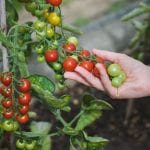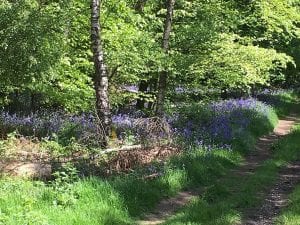Are you “summer ready”? Well, we know that means many things to many people and we are not about to make any imperious statements on how to look – on the beach or anywhere!
Some of us are in the low-maintenance camp when it comes to primping and preening, but we all want to feel our best selves, especially when the sun shines. And applying a lovely moisturiser, fresh from the fridge (expert tip) is one of those small joys that make life just a little sunnier.
Whether you’re lucky enough to be jetting off towards somewhere exotic, have been invited to a wedding or just want some sparkle, the good news is that there are so many new easy-to-use products and treatments for all pockets, including travel versions (100ml or less). Happy holidays!
Sun protection
Protecting your skin doesn’t have to be a faff. What’s more, experts at the British Skin Foundation say own-brand products are not necessarily less effective than pricier options. However, dermatologists rave about La Roche Posay’s Anthelios range which sinks in superbly and offers SPF 50 (the factor recommended for face and hands, which show damage soonest, whatever the weather). Another beauty insider fave is Institute Esthederm’s Adaptasun. If you do get slightly too much sun, or are flying, try this aloe vera sheet mask by Masque Bar.
Make-up
Cult beauty fans: Huda Beauty’s Summer Solstice Highlighter Palette boasts four sunny colours to exaggerate cheekbones, brow bones and collarbones… don’t be alarmed – they work on all age ranges and skin tones! Helen Mirren recently waxed lyrical about microblading (the semi-permanent eyebrow tattoo) which has helped frame her face. Check it out at your nearest salon as well as Urban Decay’s brow range. Every handbag needs a YSL Touch Eclat (check out the limited edition stars design). And NARS does peerless bronzers such as this in Sun Wash. Check out Cult Beauty, Birch Box and Beauty Pie for bargains.
Tan & Glow
Some people seem to “glow” effortlessly and one of them is Tamara Ecclestone whose new range called Show, especially the Shimmer Body Oil (£35) is adding a classy occasion-ready shimmer to our skin here at R&A Towers (and looks pretty on your
dressing table); www.harveynichols.co.uk We’re also enamoured with NKD SKN pre-shower gradual tan lotion; www.nkdskn.com. If you do want to eschew the slap-on-at-home route, the Tanning Shop team can help you tan as safely as possible courtesy of their spray tan and sunbed options – visit www.thetanningshop.co.uk
Hair
Protecting your hair from UV damage is just as important as protecting your skin if you want to have healthy hair. Check out our helpful tips (see right) for sleek summer hair and Label M products such as its Protein Spray which can be spritzed on before and after going in the water and in the sun. Another hair product insiders are raving about is Matrix Biology Advanced Keratindose Pro-Keratin Renewal Spray (£12.35, www.lookfantastic.com). And be prepared to swoon when you sniff Diptyque’s heavenly Eau des Sens range, which includes a hair mist we didn’t know we couldn’t live without until now! www.diptyqueparis.co.uk
Defuzzing
For perfect pins, FFS (it stands for Friction Free Shaving, people!) has come to the rescue with a deluxe “shaviour” range! This includes a rose gold or silvia engraved German-designed razor, made to handle women’s curves, refills and add-on products, with subscription packages from just £9 a month… Just hide your box of goodies from housemates/ family! For a truly sleek finish, waxing has come a long way, with the best practitioners (such as Pure Beauty in Fulham) using only the finest resins, natural ingredients and aromatherapy oils – good practitioners can remove some hair as short as 1mm.
Extras
Beauty editors and the glossy posse have been glowing about the bespoke hyaluronic acid injections courtesy of Chelsea’s Lovely Clinic; www.thelovelyclinic.co.uk
We don’t approve of “anti-ageing” as such but if you want a beauty boost, Harley Street dreamboat Dr Dirk Kremer (Google him!) has form when it comes to skin rejuvenation. Regularly named one of the world’s top plastic surgeons, he spent years working in an intensive care burns unit and recently launched his own peptide-driven SkinDoc range. www.skindocformula.com. And we’re swooning over the new flavours of Purple Tree Skincare’s Miracle Balms. Made from naturally derived ingredients, these handbag must-haves are cruelty- free and vegan friendly for multiple uses.
Skincare
Fade Out’s vitamin-enriched formulations harness natural active ingredients to even skin tone and reduce hyperpigmentation caused by sun exposure, ageing and hormonal changes in less than four weeks, thanks to vederine and kahai oil; www.fadeout.com. We’re also big fans of the Origins x Madeleine Shaw range, full of natural goodies, including the Glow-Co-Nuts face mask; www.origins.co.uk. And check out Yardley London’s summer range www.yardleylondon.co.uk
Expert Hair Tips
Ever wondered why, during summer, your hair becomes extra damaged? It might feel particularly dry and brittle. This is because UV rays burn the inside and outside layers of the hair follicles. Just like unprotected skin, the hair can get sunburnt, too. So, just as you would apply sun cream to your skin on a sunny day, you should think about protecting or covering your hair or maybe covering it up with a hat. Your hair has the same pH level as your skin, so it needs just as much protection. You need to consider your scalp, too, which will become sensitive, dry, and flaky if it burns. When your hair gets burnt, it becomes more fragile and likely to break. It will also increase colour fade, making your hair look dull and lifeless. You can prevent this damage by using a UV protector. The pick of the best are Mythic Oil, Intense Repair by Shu Uemura, and Nutrifier by L’Oréal. The mask will smooth out sun-exposed hair, recover softness and help to clear up any flakiness on your scalp.
Follow all these tips, and you will be beach ready in no time!














